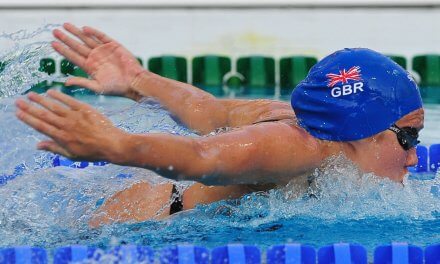A long time ago, before swimming focused on being a competitive sport, the few authors who wrote about swimming were using the expression “art of swimming”. We find this expression in many books, including encyclopedic, dating from the 18th and 19th century.
In the 20th century, as swimming competition events became more and more popular, the expression “ sport swimming” took precedence over the expression”art of swimming”. The first Olympic games of Baron Pierre de Coubertin held in 1896 in Athens counted 4 swimming events. Gradually, the focus was on performance and speed and of course world records. Over the years, the expression and the notion of “swimming art” became totally obsolete.
A bit like for the martial arts approach, there exists a specific approach to the practice of swimming that goes beyond recreational swimming or the swimming sports and all swimmers who practice their sport – I mean their art (!) – with passion and stubbornness have shared this approach unconsciously or consciously.
Let’s recall some of the characteristics of the definition of art:
– art is a human activity, the product of this activity or the idea that we make of it, deliberately addressing the senses, emotions and the intellect (see wikipedia).
– art is embodied through the work of art.
– art requires the mastery of flawless technique and art is part of a process of learning and continuous improvement.
– art is part of an aesthetic search.
I believe that, to a certain extent, a good swimmer can recognize itself in all these sentences when swimming. For example he can perfectly approach the practice of swimming as the ones of the “katas” in karate: the search for the perfect gesture, the most effective move performed with the greatest precision possible. The swimmer makes gesture and the gesture becomes the swimmer and practice makes perfect for the ones who follow that approach.
The swimmer who follow this approach will no longer feel the swim laps in a tiresome and mechanical way but will instead seek to release his creative energy to stimulate his senses, his intellect and his emotions in the search for an eternal perfection.
Perhaps some readers already imagine the attribution of jerseys or caps of different colors (in judo, those are belts) but I do not think we need to go to such a caricature.
Having to evolve in the aquatic environment, which is so foreign to us, breaks our habits of earth walkers. This forces us to rethink the geometry of our body and our movements, to find new landmarks, to focus on our feelings and especially to repeat tirelessly the same movements sometimes to change a tiny detail so that our swim is still more perfect and harmonious; in a word, to master our art! This search for the right gesture can only go hand in hand with a search for inner harmony and there is no need for a stopwatch or for being in full youth for that.
Let’s take the time spent on swimming as a great chance to find balance and harmony. The experienced swimmer knows that the more he perfects his gesture, the more he tends toward simplicity. Swimming is simple. When it is complicated, it simply means that the swimmer is in error.
In this way, perhaps, swimming art regaining its nobility can be seen as a school of life and a certain path to wisdom.
Every swimming enthusiast should try it out!



Recent Comments